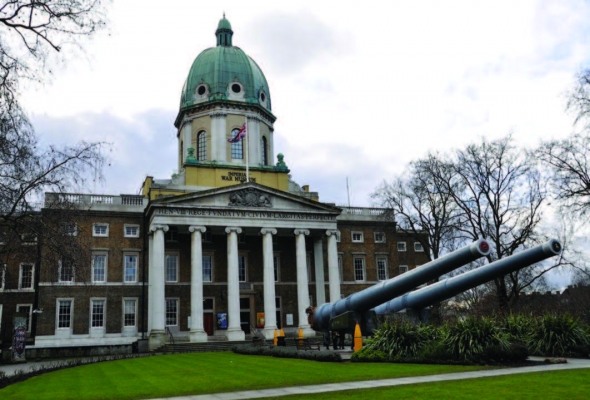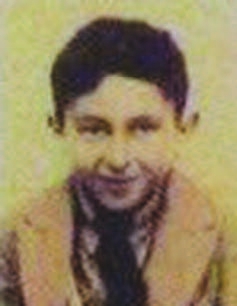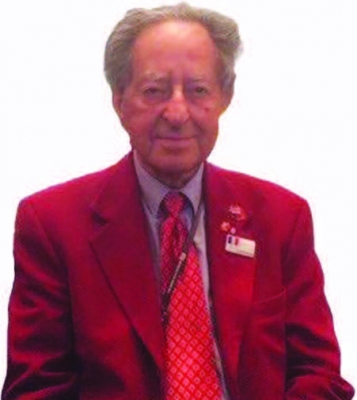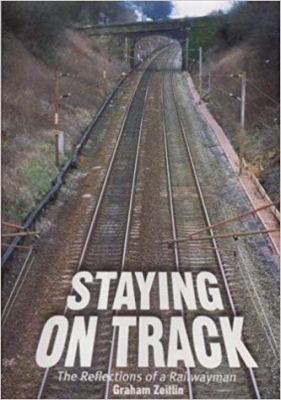Telling it Like it Was in World War II
By man who was at school when bombs rained down
The grandson of two sets of Jewish Russian immigrants, nonagenerian Graham Zeitlin has a great deal to share with visitors walking the impressive halls and galleries of the Imperial War Museum in London.
Born in 1929, Graham is one of the few remaining octagenarian and nonagenerian volunteers who share their personal war period stories with visitors to the IWM. For the last twelve years, Graham "tries to come in" from his home in Harrow a couple of times a week to speak to museum-goers about his experiences as a youngster during the war. Sometimes, as with this writer later, he speaks of his being born in Cardiff, South Wales, moving to the Midlands when he was a child, and of his paternal grandfather having settled in Manchester.
"I know that my paternal grandfather, Morris Zeitlin, was born in 1873, landed in Leith, Scotland in 1891, and for a period lived in Manchester, where at one point he was the General Secretary of The Pressers, Tailors & Machinists Union," explained Graham, somewhat proudly.
"In Manchester he worked in the tailoring trade and threw himself into building up a Trade Union branch and became a spokesman and ardent Socialist.He moved to Cardiff in 1909 and when I was four years old my parents, Harry and Leah, moved from Cardiff to Moseley, Birmingham, where I had maternal grandparents.As two of my uncles married local Birmingham Jewish girls, my grandfather also eventually joined us in the Midlands."
Dressed in a smart red jacket, blue shirt and red tie, Graham is standing next to an eye-catching placard on a wooden stand, the height of which is almost the same as that of the dapper gentleman himself.On the top half of the red and white sign is the IWM logo. The bottom half shows a black and white photograph of Graham as a young teen, under which is written "Grew up in Birmingham during the Second World War".
The sign had caught my eye earlier on when wandering around the incredible museum, but Graham was yet to arrive at his pitch, it would seem.However, on the way back he was at his designated station, already addressing and answering questions fielded by a number of families from England, America and Japan.
Graham went to school in the Hall Green area of Birmingham, but was evacuated with the rest of his schoolmates to either the outskirts or to the countryside around as the city suffered years of heavy German aerial bombardment.
"As strange as it might seem, although children were evacuated to the countryside, we came into the city every day to go to school," he told his somewhat puzzled audience."The reason for this was because the bombings were at night, so during the day it was safe to go to school but not to stay in the city during darkness," he explained.
"One night our school was hit by a bomb and badly damaged," he said, showing a photograph of the damaged building. "However, it didn't mean we couldn't go to school, as unfortunately they found an alternative building until ours was repaired," he quipped.
He also had his audience laughing when he described how often teachers would doze off at their desks, having been up all night on duty with the Home Guard.
"We children also did all sorts of things to support the war effort and I used to make puppets and put on shows.Nothing was charged to come in, but to exit afterwards it was hinted that "a charitable donation" be made towards the war effort," he said rather tongue in cheek.
He explained that the industrial city of Birmingham came under constant bombardment by the German Luftwaffe from the beginning of August, 1940 until April, 1943.Children also helped with growing food on small plots of land and caring for chickens, he explained to the youngsters in the group of museum visitors.
When Graham's audience dispersed, I asked him more about his family in Birmingham, as my mother was from that city and until very recently I still had family ties there.My father was born in Wales to Polish immigrant parents and after marriage, my mother moved to South Wales as well.
Of course, as is the norm in the Jewish world, it didn't take more than a few sentences to find mutual connections to people, places and shared interests!
Graham's working career began as a junior clerk with the Great Western Railway and after being conscripted to the British Army, he returned to working for the railway that became British Railways after nationalization.When he retired he held a central position in the planning of freight services through the Channel Tunnel.
With five decades of working on the railways behind him, Graham wrote a book entitled Staying on Track, The Reflections of a Railwayman, describing in part his years of the challenges, frustration and enjoyable experiences during his long career in the British railway industry, beginning with the privately owned Great Western Railway, then British Rail, Freightliner and eventually, the private sector.
Graham was married to the late Gilda Baron, an internationally reknowned textile artist and ardent supporter of the Sir Charles Clore Jewish-Arab Community Center in Israel.Over the years both she and Graham developed a close relationship with the center's director, Mohammed Fahili, and visited the facility in the northern port city of Akko.
"When Gilda was diagnosed with terminal cancer and given only a short time to live, Mohammed flew from Israel to London for just 24 hours to be by her bedside and hold her hand before she passed away. It was an incredibly moving experience, I sat on one side of Gilda's bed holding her hand, and Mohammed on the other side.
"It was a marvellous, heart-warming testament to the depth of the friendship and respect that developed over the years.The fact that an Arab Muslim from Israel flew especially to London for just one day to visit a terminally ill Jewish woman is quite something, don't you think? Actually, these days Mohammed has a photograph of Gilda on the wall behind his desk at the Community Center in Akko," Graham concluded, neither of us dry-eyed.











Comments